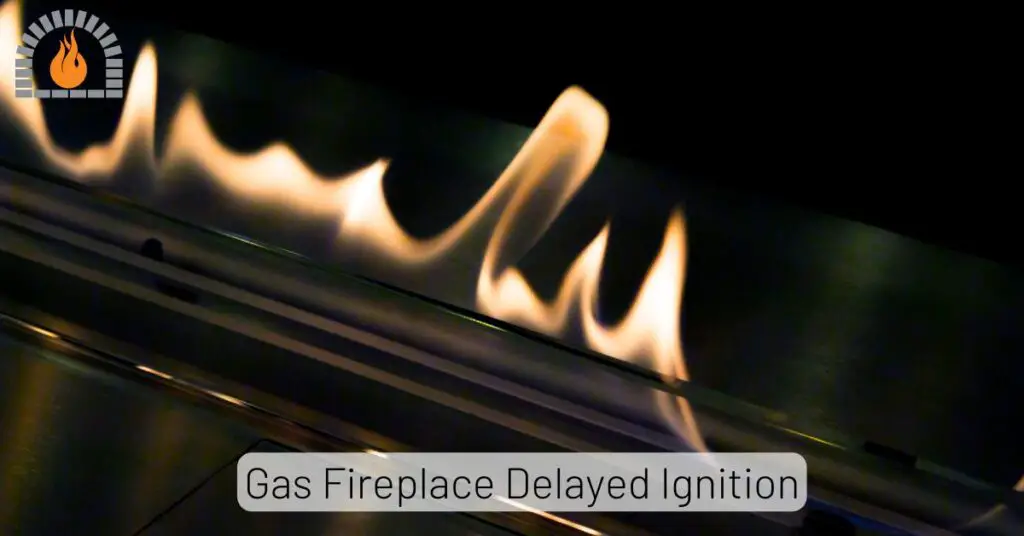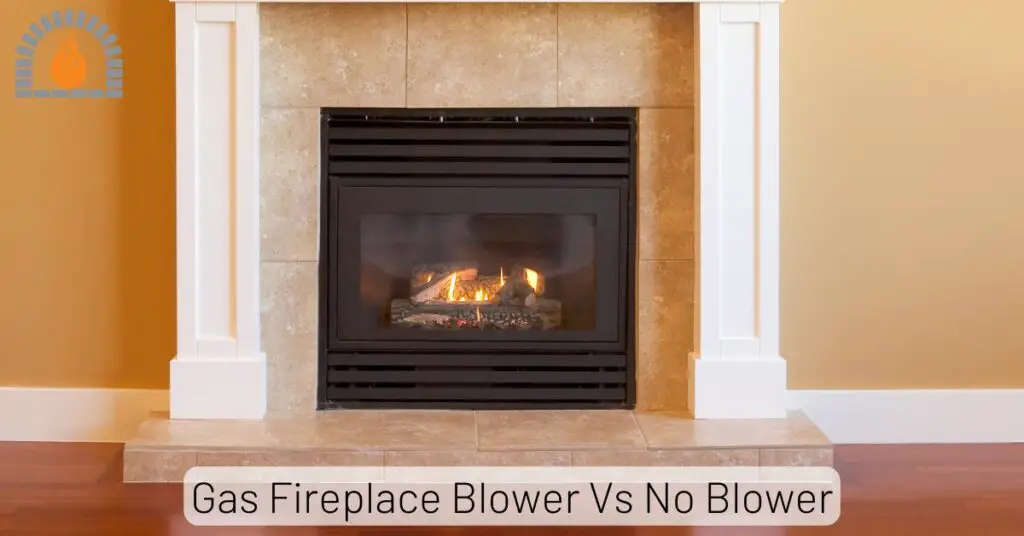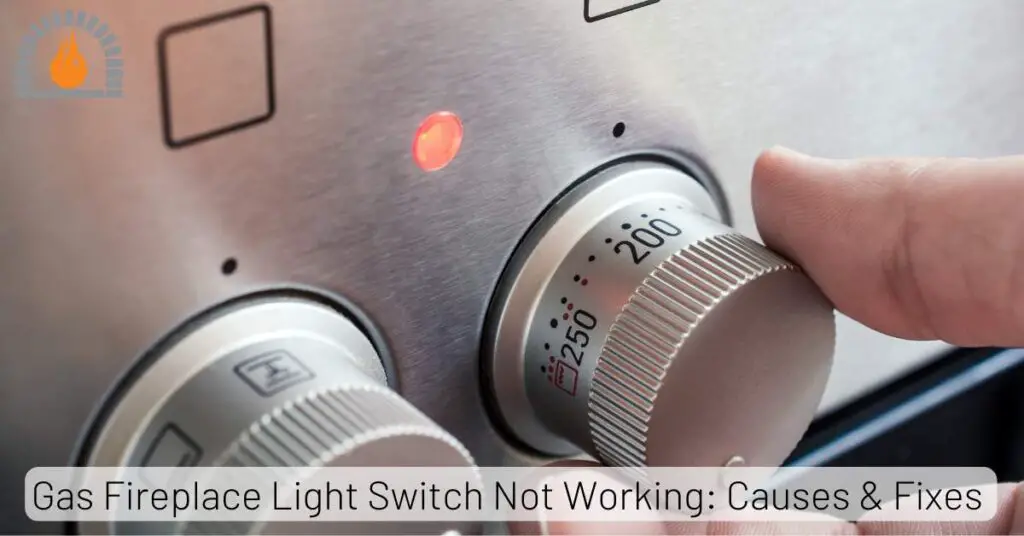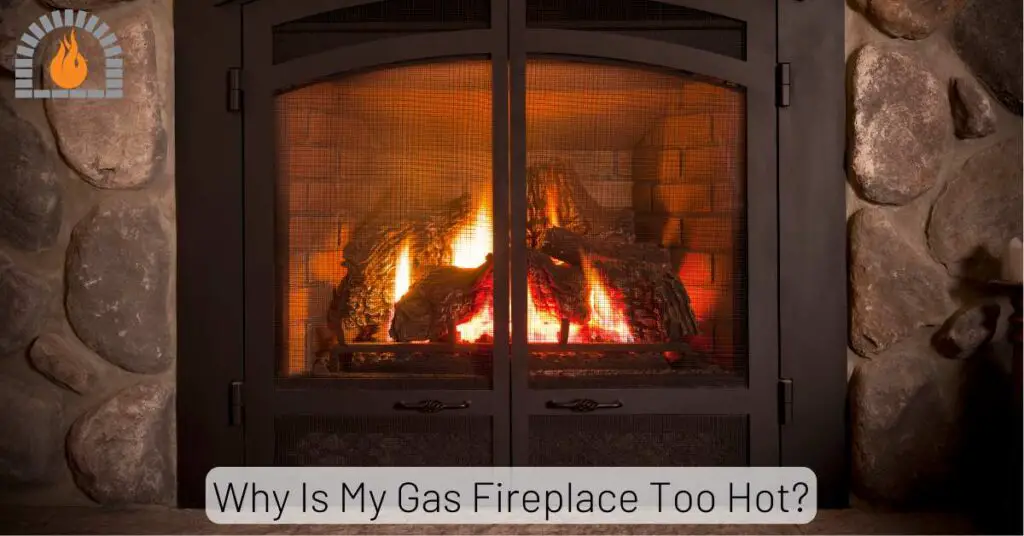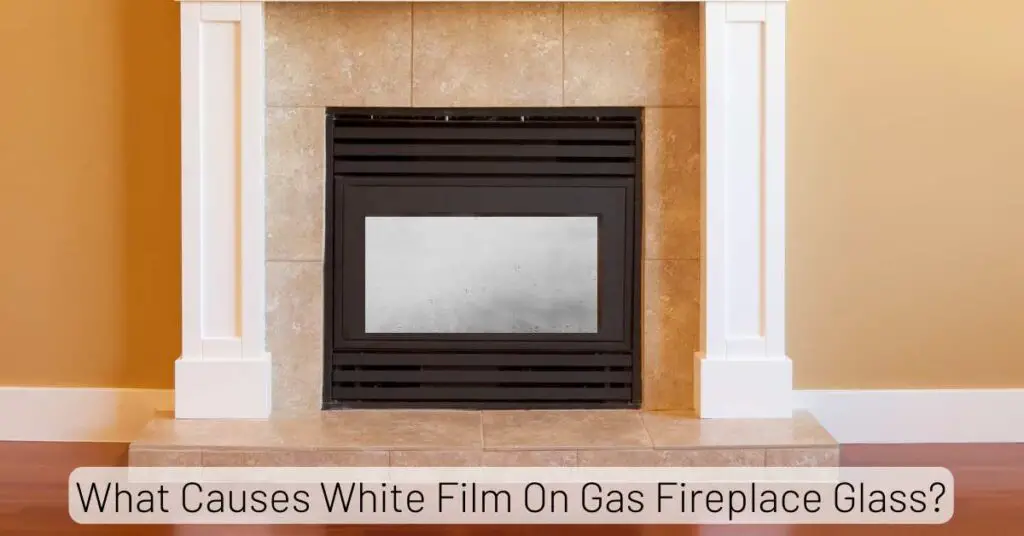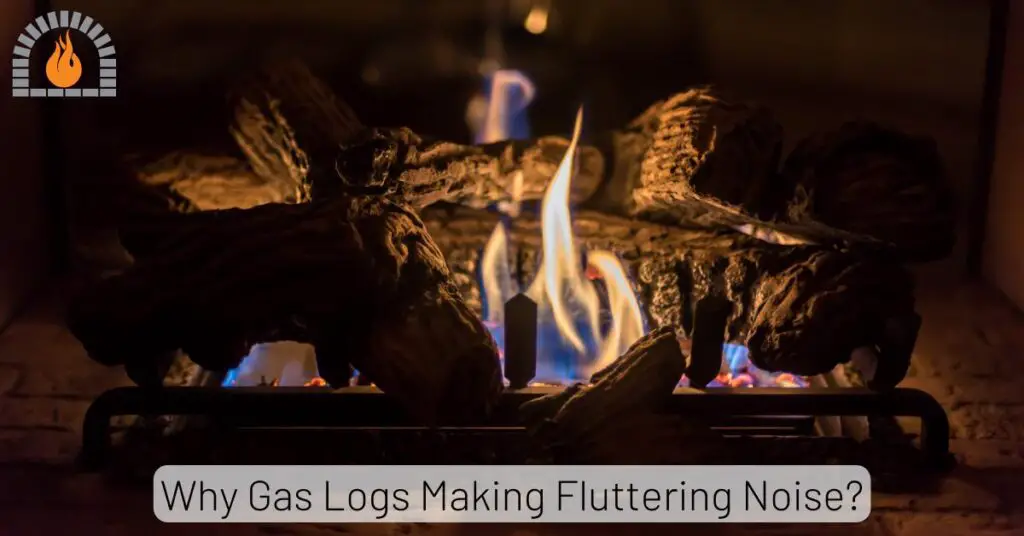Converting a wood fireplace to gas has become one of the most popular home upgrades in recent years, not just for convenience but also for energy savings, safety, and overall lifestyle improvements.
In this guide, we’ll take you step by step through everything you need to know about converting your wood-burning fireplace into gas. From the benefits of making the switch, the different types of gas fireplaces available, and the detailed installation process, to costs, maintenance, safety, and common mistakes to avoid—you’ll find it all here. By the end, you’ll have a clear roadmap for transforming your old, labor-intensive wood fireplace into a modern, efficient gas-powered heating system.
So, if you’re ready to enjoy warmth at the touch of a button without giving up the charm of a flickering flame, let’s dive in and explore how to turn your wood fireplace into gas the right way. Read the complete article for complete guide.
Step-by-Step Guide to Converting a Wood Fireplace to Gas
Step 1 – Inspect the Existing Fireplace
Before any installation begins, a professional should inspect your current fireplace. They’ll check the structural integrity of the firebox, chimney, and flue to make sure everything is safe and up to code. Any cracks, leaks, or damage must be repaired before conversion.
Skipping this step could result in gas leaks, poor ventilation, or even fire hazards. Think of it as a safety check-up—your fireplace must be in good health before it can handle the upgrade.
Step 2 – Choose the Right Gas Conversion Option
Next, you’ll need to decide whether you want a gas log set, insert, or built-in fireplace. This decision will be based on your budget, heating needs, and aesthetic preferences. A professional installer can guide you through the pros and cons of each option based on your specific setup.
If you want simple ambiance, go with gas logs. If you want real heating efficiency, go with an insert. If you’re remodeling and want a bold new design, go with a built-in.
Step 3 – Prepare for Installation
Once you’ve chosen your system, preparations begin. This may involve cleaning the chimney, repairing masonry, or making modifications to your firebox. At this stage, your installer will also determine the best way to run a gas line to your fireplace.
For vented systems, the chimney may need to be relined to accommodate exhaust gases properly. For ventless systems, you’ll want to ensure your room meets ventilation and size requirements as per local codes.
Step 4 – Install Gas Line and Connections
This is the part of the job that should never be DIY. Running a gas line requires licensed professionals who know how to connect to your home’s existing supply safely. They’ll install shut-off valves, test connections, and ensure there are no leaks.
If your home doesn’t already have natural gas, you may need to arrange for a propane setup, which involves installing a tank outside your property. Either way, a safe and secure gas connection is the backbone of your new fireplace system.
Step 5 – Install Gas Logs or Insert
With the gas line in place, the fireplace unit can finally be installed. If you’re going with gas logs, the installer will place the log set, connect it to the gas line, and test the burners. For inserts or built-in fireplaces, the installation process is more involved and may include framing, sealing, and venting.
This is where your fireplace really starts to come to life. Within a few hours to a couple of days (depending on the system), your wood fireplace will be transformed into a modern gas-burning centerpiece.
Step 6 – Test for Safety and Functionality
The final step is testing. The installer will ignite the system, check the flame quality, verify ventilation, and ensure everything works as intended. They’ll also walk you through how to use the controls, pilot light, and safety features.
Never skip this phase. Testing ensures there are no leaks, ventilation is working properly, and your fireplace is safe for daily use. Once everything is signed off, you’re ready to sit back, relax, and enjoy your new gas fireplace.
Benefits of Converting a Wood Fireplace into Gas
Convenience and Ease of Use
The biggest draw of a gas fireplace is convenience. Think about it: no more lugging firewood inside, no more waiting for logs to catch fire, and definitely no more ash cleanup the next morning. With gas, all it takes is pressing a button on a remote or flipping a wall switch, and within seconds, you’ve got a steady flame. This ease of use makes gas fireplaces perfect for families with busy lifestyles or anyone who enjoys instant comfort without the extra work.
On top of that, gas fireplaces can run for as long as you need without you constantly tending to them. Unlike wood fires, which need refueling, gas fireplaces provide continuous heat for hours. This makes them not only convenient but also far more practical during cold winter nights. For people who use their fireplace as a primary or supplemental heating source, this is a game-changer.
Also, gas fireplaces allow you to control flame intensity and heat levels. Some models even come with timers, thermostats, and remote controls so you can manage your indoor climate effortlessly. Compare that to the unpredictability of a wood fire, and the choice becomes pretty clear.
Cleaner and Eco-Friendly Heating
Wood-burning fireplaces, as cozy as they may seem, aren’t exactly eco-friendly. They produce smoke, ash, soot, and creosote buildup in chimneys—all of which impact air quality inside and outside your home. In fact, some cities restrict wood-burning fireplaces during certain times of the year due to air pollution concerns.
Gas fireplaces, on the other hand, burn clean. Natural gas and propane produce minimal emissions compared to wood, making them much better for the environment. You won’t deal with smoky rooms, lingering odors, or harmful particulates in your home. Plus, you can say goodbye to creosote buildup, which is a major cause of chimney fires in wood-burning setups.
For eco-conscious homeowners, converting to gas is a responsible move. Not only will you reduce your carbon footprint, but you’ll also ensure cleaner indoor air quality for your family. If you’ve got kids, pets, or family members with asthma or allergies, this benefit alone makes the switch worthwhile.
Cost-Effectiveness and Energy Efficiency
While some people think wood is cheaper because it can sometimes be sourced locally, the truth is that gas fireplaces are far more cost-effective in the long run. Wood requires constant purchase (unless you chop your own), storage, and hauling. Add in the costs of chimney cleaning, potential repairs from creosote damage, and the inefficiency of heat escaping through the chimney, and wood-burning becomes more expensive than you might expect.
Gas fireplaces, on the other hand, are highly efficient. Many models come with ratings of up to 90% efficiency, meaning most of the energy goes directly into heating your home rather than disappearing up the chimney. This efficiency translates to lower utility bills, especially if you rely heavily on your fireplace during winter.
Additionally, many gas fireplaces have features like blowers and fans that help distribute heat evenly throughout the room. You’re not just getting ambiance—you’re getting real, functional heating power. Over time, the savings on maintenance and fuel can easily outweigh the initial conversion cost.
Increased Home Value and Aesthetic Appeal
Another major perk of switching to gas is the boost in home value. Homebuyers today are looking for features that offer comfort, efficiency, and style—and a gas fireplace checks all three boxes. It’s often listed as a premium feature in real estate listings, and for good reason: buyers see it as a modern, desirable upgrade.
Aesthetically, gas fireplaces can be customized to fit any home style. Whether you want a sleek, contemporary look with glass beads or a traditional setup with realistic ceramic logs, there’s a design out there that suits your taste. Some models even let you choose between different flame patterns and ember effects, creating a realistic fire experience without the hassle of wood.
Not only will you enjoy the ambiance every day, but if you ever sell your home, your fireplace conversion could very well become a strong selling point. It’s one of those upgrades that pays off both in lifestyle and resale value.
Things to Consider Before Conversion
1) Fireplace Type and Condition
Before you start dreaming about that remote-controlled fire, it’s important to evaluate your existing wood fireplace. Not all fireplaces are created equal, and their condition plays a huge role in determining what type of gas conversion is possible. If your masonry fireplace has cracks, damaged liners, or structural issues, you’ll need repairs before you can safely convert it.
Pre-fabricated (factory-built) fireplaces, which are common in newer homes, have specific limitations too. Some can be converted with special gas log sets or inserts, while others aren’t suitable at all. That’s why a professional inspection is absolutely necessary before making the switch.
Skipping this step could not only lead to safety hazards but also result in wasted money if your fireplace can’t support the conversion you were planning. Think of it like renovating a house—you wouldn’t install a new kitchen without checking if the foundation is solid.
2) Venting Options (Vented vs. Ventless)
When it comes to gas fireplaces, venting is a big deal. Vented systems work much like traditional fireplaces, expelling combustion gases through a chimney or vent pipe. They offer a realistic flame appearance and are considered safer since harmful gases are directed outside.
Ventless (or vent-free) systems, on the other hand, don’t require a chimney. They release combustion byproducts directly into the room, which makes them highly efficient since all the heat stays indoors. However, they’re not allowed everywhere due to indoor air quality concerns, and they may require additional safety features like oxygen depletion sensors.
Your choice between vented and ventless will depend on your local building codes, your home’s setup, and your personal preferences. Both options have pros and cons, but getting professional advice is the best way to determine which one works for your situation.
3) Gas Supply Requirements
Of course, a gas fireplace won’t run without a reliable gas supply. If your home already has a natural gas line, the installation will be fairly straightforward. However, if you don’t, you may need to install a new line, which adds to the overall cost and complexity of the project.
In rural areas, propane is often used instead of natural gas, and that requires a storage tank on your property. Both options work well, but they come with different price points and availability depending on your location.
It’s also important to make sure your home’s gas system can handle the additional demand of a fireplace without compromising other appliances like stoves, furnaces, or water heaters. A licensed professional will be able to assess your supply and make recommendations for any upgrades needed.
) Safety Regulations and Permits
Last but definitely not least, safety regulations must be taken seriously. Fireplace conversions are not simple DIY projects—they involve gas lines, combustion, and potential fire hazards. Most local building authorities require permits for such installations, and failing to secure them could result in fines or even denial of insurance claims in case of accidents.
Professional installers not only know the codes but also ensure that the installation meets all safety standards. They’ll check for proper ventilation, secure connections, and compliance with regulations. This step isn’t just about legality—it’s about protecting your home and family.
Different Types of Gas Fireplace Conversions
1) Gas Log Sets
Gas log sets are one of the most straightforward and cost-effective ways to convert a wood fireplace to gas. Essentially, they replace your logs with ceramic or refractory logs that look surprisingly realistic. They work with either vented or ventless systems and can be installed fairly quickly.
The appeal of gas logs lies in their simplicity. If you want the look of a fire without the hassle of burning wood, this is a great option. They don’t provide as much heat as other options, but they excel at ambiance.
2) Gas Fireplace Inserts
If you’re looking for a more powerful heating solution, gas fireplace inserts are a fantastic option. Unlike simple gas log sets that mainly provide ambiance, inserts are essentially self-contained units that slide into your existing wood fireplace. They are designed to transform an inefficient wood-burning space into a high-efficiency heating appliance.
Gas inserts come with their own sealed combustion systems, glass fronts, and direct-vent options, which makes them significantly more efficient. In fact, many models reach efficiency ratings of 70–90%, meaning the majority of the heat stays inside your home rather than being lost up the chimney. That’s a huge improvement compared to wood-burning fireplaces, which often lose more heat than they generate.
Another advantage of gas inserts is versatility. They come in various sizes and designs, so whether you prefer a traditional log look or a sleek, modern aesthetic with glass and stones, there’s a style that fits. Some models also include features like fans, thermostats, and remote controls for maximum convenience.
While inserts cost more than gas logs, they are the best choice if you want to actually heat your space efficiently. For homeowners who use their fireplaces regularly during colder months, inserts often pay for themselves in energy savings over time.
3) Built-in Gas Fireplaces
Built-in gas fireplaces are for those who want to go all-in on a modern upgrade. Unlike inserts or log sets, built-in fireplaces don’t rely on your old wood-burning setup at all. Instead, they are installed as standalone units, often in a completely new location within your home.
This option gives you full design freedom. Want a fireplace in your bedroom, dining room, or even bathroom? With a built-in gas fireplace, that’s possible. They come in single-sided, double-sided, or even three-sided designs, allowing you to create a dramatic focal point in any room.
Because they don’t use your existing fireplace structure, built-in units require more construction work, which makes them the most expensive option. However, they offer unmatched flexibility, efficiency, and style. If you’re remodeling your home or building a new one, this is a fantastic way to incorporate the warmth and beauty of a fireplace in places you never thought possible.
4) Direct-Vent vs. Ventless Systems
When deciding between direct-vent and ventless gas fireplaces, it’s important to understand how they differ:
- Direct-Vent Systems: These draw air from outside for combustion and vent exhaust back outside through a sealed system. This makes them very safe and efficient, as no air from inside your home is used or contaminated. They also produce a realistic flame and are ideal for long-term use.
- Ventless Systems: As mentioned earlier, these don’t require a chimney or vent. They’re easier and cheaper to install and offer nearly 100% heat efficiency because no heat escapes outside. However, they do release some combustion byproducts into your living space. While safe when installed properly, they are not allowed in all areas due to strict building codes.
Your choice will depend on budget, home setup, and local regulations. Direct-vent systems are the safer and more widely accepted option, while ventless systems appeal to those who want maximum efficiency and flexibility.
Cost of Converting a Wood Fireplace into Gas
The cost of conversion varies widely depending on the system you choose:
- Gas Log Sets: $500 – $2,500 installed
- Gas Inserts: $2,000 – $5,500 installed
- Built-in Gas Fireplaces: $4,000 – $10,000+ depending on construction work
These prices include professional installation but may not cover extra costs like chimney repair, venting modifications, or gas line extensions.
Factors Affecting the Price
Several factors influence the final bill:
- The condition of your existing fireplace
- Whether you already have a gas line in place
- Venting requirements (direct-vent vs. ventless)
- The type and size of the fireplace unit
- Local labor and permit costs
Customizations like decorative media, smart controls, and remote operation also add to the price.
Cost Comparison: Wood vs. Gas Over Time
While the upfront cost of conversion may seem high, gas fireplaces often save money in the long run. Wood-burning fireplaces require constant purchase of firewood, chimney cleaning, and ongoing maintenance. Gas fireplaces, on the other hand, are cleaner, more efficient, and lower-maintenance.
Over a few years, the savings on wood, cleaning, and heating efficiency can offset the initial investment. Plus, the added home value makes it a financially smart decision.
Common Mistakes to Avoid During Conversion
1) DIY Installation Risks
One of the biggest mistakes homeowners make is attempting a DIY conversion. While YouTube tutorials may make it look easy, working with gas lines is dangerous and requires expertise. A small mistake—like a loose fitting or improper seal—can lead to gas leaks, explosions, or fires.
Not only is it unsafe, but many jurisdictions also prohibit DIY gas installations without a permit and license. Skipping professional help could void your insurance coverage, leaving you unprotected in case of an accident. The bottom line: always hire a certified professional for fireplace conversions.
2) Choosing the Wrong Type of Gas Fireplace
Another common pitfall is choosing the wrong system for your needs. For example, some people install gas log sets thinking they’ll provide strong heat output, only to be disappointed when they realize logs are more decorative than functional. Others choose ventless fireplaces without realizing they’re restricted in certain areas.
Before making a decision, carefully consider your heating goals, budget, and home layout. Consulting with a fireplace specialist can save you from costly mistakes and ensure you get a system that matches your expectations.
3) Ignoring Ventilation Needs
Ventilation is one area you can’t afford to overlook. Improper venting can lead to carbon monoxide buildup, which is both odorless and deadly. Even ventless systems have strict requirements for safe operation, including room size and oxygen sensors.
Unfortunately, some homeowners cut corners here, thinking it won’t matter. But inadequate ventilation can put your entire household at risk. Always follow manufacturer guidelines and local building codes when it comes to venting.
4) Overlooking Local Regulations
Every city, county, or state has its own building codes, permit requirements, and safety regulations regarding fireplaces. Some areas ban ventless systems, while others require specific venting materials.
Failing to check local regulations can result in fines, forced removal of your fireplace, or even denial of insurance claims in case of accidents. To avoid these headaches, work with licensed professionals who know the codes in your area.
Safety Precautions for Gas Fireplaces
Carbon Monoxide Detectors
No matter what type of gas fireplace you choose, installing carbon monoxide (CO) detectors is non-negotiable. These devices alert you to the presence of CO—a dangerous, odorless gas that can build up if something goes wrong with your fireplace or ventilation. Place detectors near your fireplace, in bedrooms, and on every level of your home for maximum safety.
Proper Ventilation
Even though gas fireplaces are cleaner than wood, they still produce combustion gases that need to be properly vented. For direct-vent systems, make sure the venting pipe is installed correctly and remains clear of blockages. For ventless units, always operate them in compliance with room size and air circulation requirements.
If you ever notice condensation on windows, unusual odors, or headaches while using your fireplace, shut it off immediately and have it inspected.
Annual Professional Inspections
Much like furnaces, gas fireplaces need annual inspections to stay safe and efficient. A professional will check for leaks, clean burners, test pilot lights, and ensure your venting system is working correctly. They’ll also inspect the glass seals and gaskets to make sure nothing is leaking into your home.
This small investment each year gives you peace of mind and helps prevent dangerous situations.
Fire and Gas Leak Safety Tips
Even with all precautions in place, it’s wise to be prepared. Keep a fire extinguisher near your fireplace, and make sure everyone in the household knows how to use it. Teach family members how to recognize the smell of natural gas (rotten eggs) and what to do if they suspect a leak: evacuate immediately and call emergency services.
Also, never use your fireplace for cooking, drying clothes, or burning materials not intended for it. Stick to manufacturer guidelines, and you’ll enjoy safe, worry-free warmth.
You May Also Like To Read:
FAQs
Can any wood fireplace be converted to gas?
Not all fireplaces are suitable. Masonry fireplaces can usually be converted, while some prefabricated models have restrictions. A professional inspection is the best way to know for sure.
How long does the conversion process take?
Simple gas log installations can be done in a few hours, while inserts and built-in fireplaces may take a couple of days, especially if gas lines or venting modifications are required.
Do I need professional help for installation?
Absolutely. Gas line work and venting require licensed professionals. DIY installation is unsafe and often illegal without permits.
Which is safer—vented or ventless gas fireplaces?
Direct-vent systems are generally considered the safest since they vent combustion gases outdoors. Ventless systems are safe when installed correctly but may not be permitted in some areas.
Does converting affect insurance policies?
It can. Some insurance providers may require proof of professional installation and compliance with local codes. Always check with your insurer before beginning the project.
Final Thoughts
Converting your wood fireplace to gas is one of the smartest home upgrades you can make. Not only does it eliminate the mess and hassle of wood-burning, but it also gives you instant, reliable heat with just the push of a button. Whether you choose a simple gas log set, a powerful insert, or a sleek built-in fireplace, the benefits are clear: greater convenience, better efficiency, improved safety, and even a boost in home value.
The key to a successful conversion is planning carefully, hiring licensed professionals, and keeping up with routine maintenance. By doing so, you’ll enjoy a cozy, efficient, and safe fireplace for years to come.
So, if you’re tired of chopping wood and cleaning up ashes, now is the perfect time to make the switch. With the right system in place, you can transform your fireplace into the modern, hassle-free centerpiece your home deserves.
Affiliate Disclosure: Fireplaceadviser.com is a participant in the Amazon Services LLC Associates Program. We may earn a commission when you click on certain links on this site and purchase.

Hello!! I am Jamal Khan. I often fix my home electric heaters and gas stove problems and research the common issues in the heating units to improve my knowledge and expertise. The aim of establishing fireplaceadviser.com is to share my expertise and knowledge with my audience.







